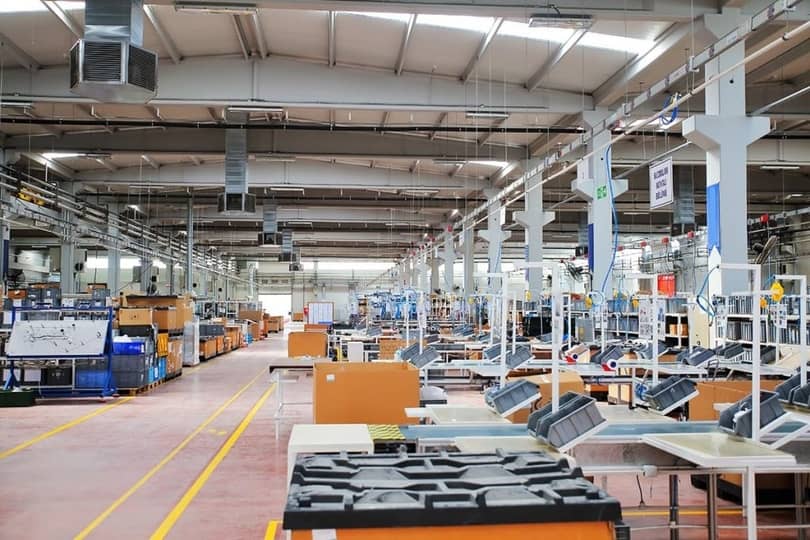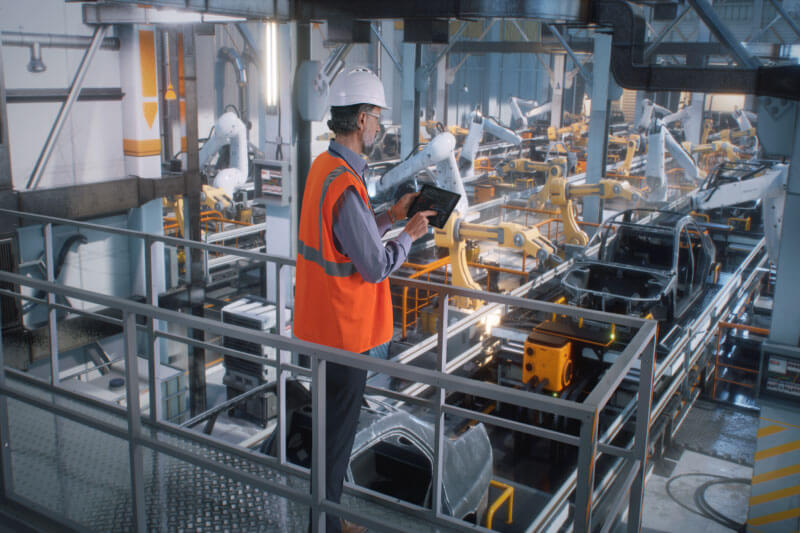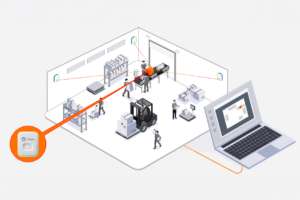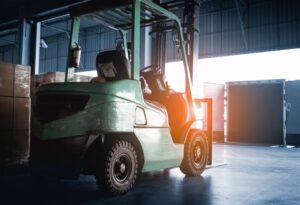Contents
In factories and warehouses, every second counts. That’s why many businesses are turning to real-time location systems (RTLS) to help them improve their manufacturing workflows. RTLS is a technology that uses sensors and software to track the real-time location of people and assets.
In this blog post, we’ll take a look at how RTLS works and the benefits it can bring to your manufacturing workflow.
How RTLS Works
RTLS systems use a combination of hardware and software to track the location of assets in real-time. Typically, RTLS systems consist of three main components: tags, readers, and an application server. Tags are placed on assets that need to be tracked, and readers collect data from the tags and send it to the application server. The application server then processes the data and provides users with information about the locations of their assets.
A real-time location system uses a variety of technologies to track the location of people and assets in real-time. These include radio frequency identification (RFID), Bluetooth Low Energy (BLE), ultra-wideband (UWB), Wi-Fi, and infrared (IR). Each of these technologies has its own strengths and weaknesses, so it’s important to choose the right one for your needs.
How Can RTLS Benefit Manufacturing Workflows
Improved asset tracking
In manufacturing facilities, it’s important to be able to keep track of equipment and other high-value assets. With RTLS, each asset is outfitted with a tag that emits a signal that can be picked up by sensors around the facility. This allows you to know exactly where each asset is at all times, which can be helpful in a number of ways.
For example, if you need to find a particular piece of equipment, you can simply pull up the RTLS interface and see where it is. Or, if an asset needs to be serviced or replaced, you can use the data from the RTLS system to plan accordingly. This means that if one of your machines goes down, you’ll be able to quickly locate the nearest replacement and get it up and running again. Not only will this save you time, but it will also save you money in the long run.
With an RTLS system in place, companies can easily track the location of high-value assets such as tools, parts, and materials. This information can then be used to optimize inventory management and streamline production processes.
Improved workflow efficiency
RTLS systems can also be used to improve workflow efficiency by providing real-time data on the status of production processes. This information can be used to identify bottlenecks and optimize production schedules. In addition, RTLS systems can be integrated with other enterprise systems such as ERP and MES to provide a comprehensive view of the manufacturing process.
By knowing the location of people and things at all times, you can optimize workflows and make operations more efficient. For example, if a certain machine is frequently used by multiple workers throughout the day, you may want to consider positioning that machine closer to where employees are stationed. By knowing the precise location of your people and assets at all times, you can optimize your factory layout and workflows for maximum efficiency.
Another application is when inventory is constantly getting lost or misplaced, RTLS can help you keep track of it so that it can be quickly located when needed. Another example is when you know that one of your assembly lines is running slow, you could use RTLS data to reroute materials so that they flow more smoothly through your factory floor.
Reduced downtime
RTLS systems can be used to reduce downtime by providing information on the location data and status of critical assets. This information can be used to perform predictive maintenance on equipment and prevent unplanned downtime. In addition, RTLS systems can be used to monitor environmental conditions such as temperature and humidity to ensure that products are manufactured under optimal conditions.
Downtime is the enemy of efficiency. When production lines are down, it costs money in lost productivity—not to mention the impact on morale. RTLS can help reduce downtime by providing accurate, real-time alerts when equipment needs maintenance or repair. By addressing issues before they lead to full-blown problems, you can keep things running smoothly and avoid costly downtime.
Better coordination between teams
In any manufacturing setting, there are a lot of moving parts (literally). To run smoothly, everyone needs to be on the same page and work together towards common goals. RTLS can help with this by providing a clear overview of where everyone and everything is at all times. This information can be used to optimize production line flow and ensure that everyone is coordinated and working together efficiently.
Enhanced quality control
Another benefit of using RTLS in your manufacturing workflow is enhanced quality control. By tracking people, products, and equipment in real-time, you can more easily identify errors and issues as they occur. This information can then be used to improve quality control procedures so that future issues can be avoided.
In addition, by having a complete record of where people, products, and equipment have been, you can more easily trace back errors to their root causes. This information can be invaluable in improving the quality of your products and reducing the risk of human error. By tracking people and equipment throughout the process, you can ensure that certified personnel are performing certain tasks and that critical tasks are being completed on schedule.

Better decision making
With access to accurate data about your operations in real-time, you can make informed decisions about how to improve workflows, resolve problems more quickly, and plan for future growth.
Greater visibility into the manufacturing process
One of the biggest benefits of using RTLS in manufacturing is that it provides improved visibility into work in progress (WIP). With RTLS, you’ll always know exactly where your products are and how they’re progressing through the production process. This information is critical for making real-time adjustments to keep things on track.
One of the most important benefits of using RTLS is that it gives you greater visibility into your manufacturing processes so that you can make more informed decisions about how to optimize those processes. By tracking people, equipment, raw materials, inventory levels, production schedules—virtually anything involved in the manufacturing process—RTLS systems can provide your business with a wealth of data that can be used for implementing process improvement measures and reducing costs. In some instances, an RTLS is combined with a manufacturing execution system to improve the overall supply chain performance of the manufacturing facility.
Better resource utilization
One of the biggest benefits of using RTLS in manufacturing is that it can help you better utilize resources. By tracking people, equipment, and materials as they move throughout the manufacturing process, you can identify bottlenecks and inefficiencies so that they can be addressed quickly. In addition, RTLS systems can be used to monitor inventory levels so that you always have the materials you need on hand without having too much excess inventory taking up valuable space in the facility.
By making operations more efficient and reducing waste, you can save money on labor, materials, and other costs associated with running the facility.
Improved customer service
One of the most important benefits of using RTLS in manufacturing is that it can help improve customer service. By tracking real-time asset locations, you can avoid situations where products get lost or delayed. This means that you can keep your customers informed about the status of their orders at all times, which will improve their satisfaction with your product or service.
In addition, RTLS can help you manage customer returns more effectively. Returns are often a headache for manufacturers, but with RTLS you can track returned items from the moment they arrive back at your facility. This allows you to quickly identify and correct any issues that led to the return, which will help reduce the number of returns overall.
A more sustainable operation overall
Implementing RTLS in your manufacturing workflow can also make your operation more sustainable overall. By becoming more efficient and reducing waste, you’ll use fewer resources overall which is better for the environment. In addition, by providing better customer service and becoming more competitive, you’ll be able to grow your business while still maintaining a commitment to sustainability.
RTLS can also help you to reduce waste and decrease production costs. These cost savings can then be passed on to your customers, making your products more competitive in the marketplace.
Litum – Helping Improve Your Manufacturing Workflow
Litum RTLS is the proven and sought-after platform for companies looking to embark on digital transformation. We speed up the transformation process with meaningful location insights that help businesses improve safety measures, enforce company rules, and optimize efficiency through better workflow management.
Litum integrates ultra-wideband (UWB) RTLS technology into battery-powered active RFID tags and trackers. This allows for more accurate tracking of products throughout the manufacturing process. Litum also provides housings for products to assure a secure and reliable fit. Our tags work in conjunction with our RTLS mesh network installed throughout your facility to create an invisible “indoor tracking system” that calculates real-time location data of assets with the highest accuracy available.
Overall, Litum RTLS is the perfect solution for companies looking to improve their manufacturing workflows. Our innovative solutions are helping manufacturers stay ahead of the competition and continue to produce high-quality products.
Contact us today to learn more about how we can help in installing RTLS for improving manufacturing workflows in your facility.




